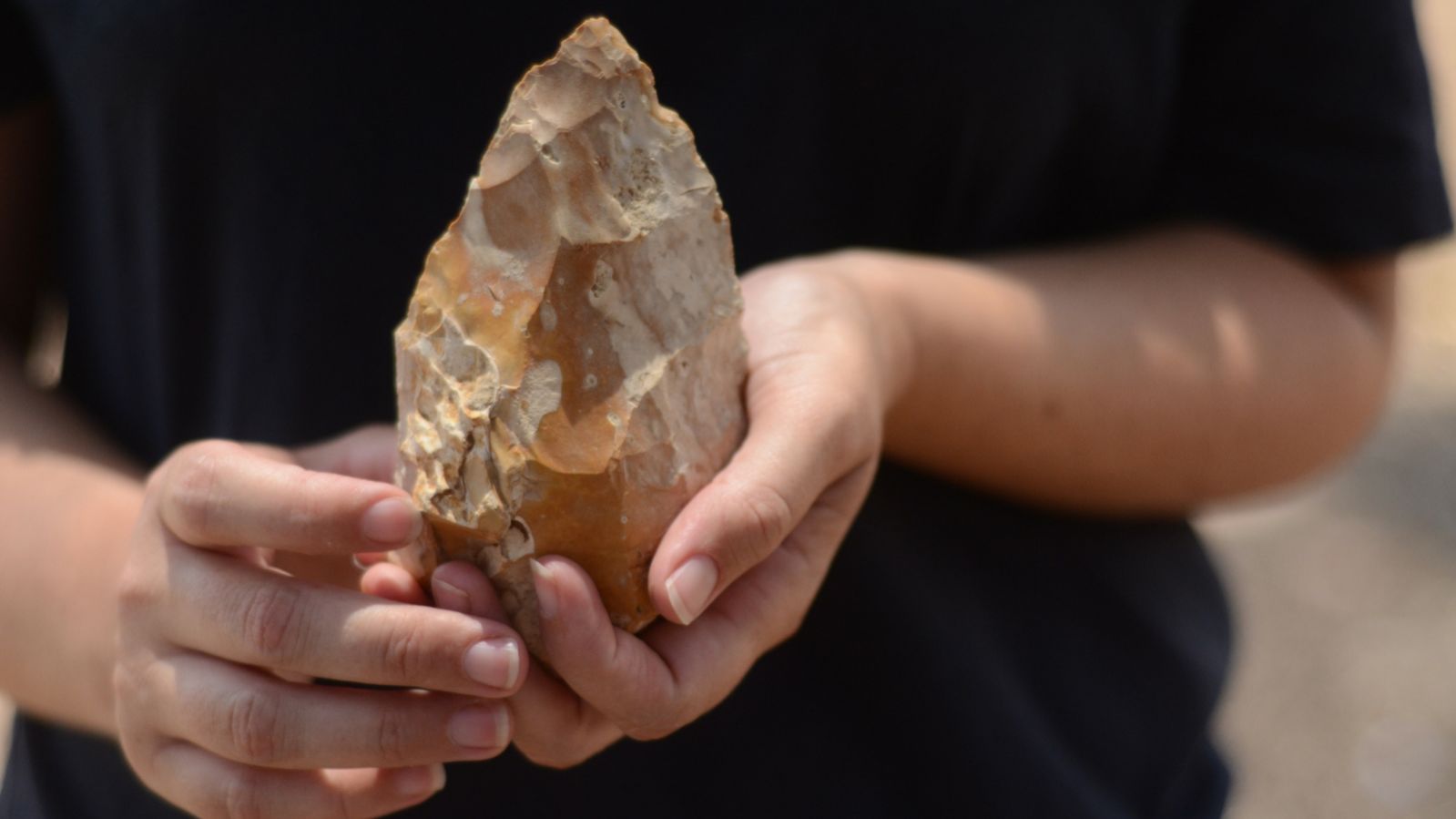Situated between the Israeli-Arab village of Jaljulia and Highway 6, just five meters below the surface, an ancient landscape some half a million years old has revealed clues into prehistoric life.
Over the last few months, hundreds of flint hand axes have been discovered on the 10-dunam (2.5-acre) site in a joint excavation by the Israel Antiquities Authority (IAA) and the archaeology department of Tel Aviv University (TAU).
The tools are typical of the ancient Acheulian culture, characterized by its distinct oval- and tear-shaped hand axes associated with early humans.
According to Mayaan Shemer, the IAA’s excavation director, and Prof. Ran Barkai, head of archeology at TAU, some scholars suggest hand axes were used to dismember large animals while others believe these tools were the “Swiss Army knife” of the Stone Age.
“This extraordinary site will enable us to trace the behavior of our direct prehistoric ancestors, and reconstruct their lifestyle and behavior on the very long journey of human existence,” said Barkai.
“The past of all of us, of all human beings, is buried in the earth, and we have a one-time opportunity to travel back half a million years and better get to know the ancient humans who lived here before us, between Jaljulia and Highway 6.”
Fighting for Israel's truth
We cover what makes life in Israel so special — it's people. A non-profit organization, ISRAEL21c's team of journalists are committed to telling stories that humanize Israelis and show their positive impact on our world. You can bring these stories to life by making a donation of $6/month.









